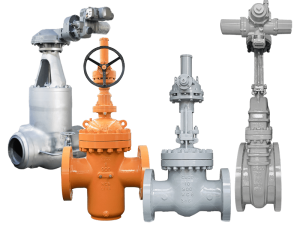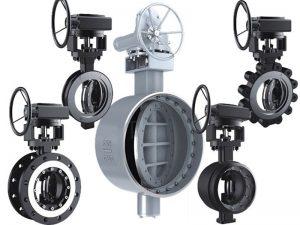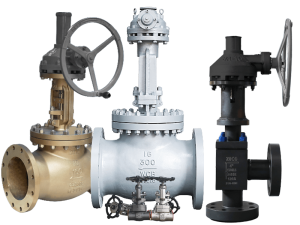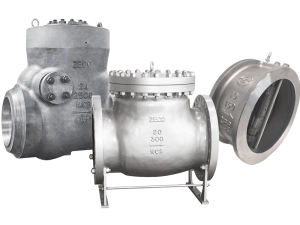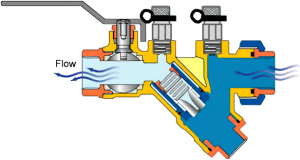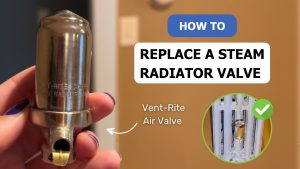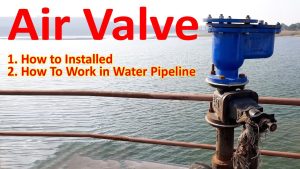Alguna vez has mirado fijamente una tubería de gas y te has preguntado: ¿se puede utilizar un válvula de bola para aplicaciones de gas?
La respuesta es breve: Sí, pero sólo si utiliza el tipo de válvula de bola CORRECTO.
Y ahí es donde la mayoría de la gente mete la pata.
En esta guía, desglosaré todo lo que necesita saber sobre el uso de válvulas de bola para gas. Desde certificaciones de seguridad hasta las mejores prácticas de instalación, aprenderás exactamente lo que se necesita para hacerlo de forma segura y legal.
¿Te parece bien? Vamos a ello.
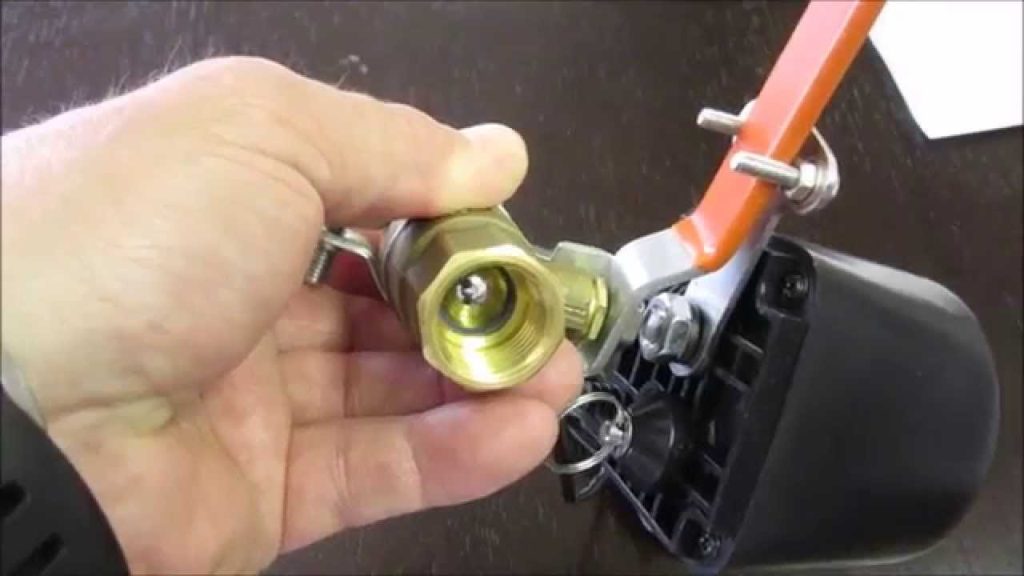
Índice
- Por qué las válvulas de bola son perfectas para aplicaciones de gas
- Los requisitos reales de las válvulas de bola para gas
- Tipos de clasificación de las válvulas de bola para gas (y su significado)
- Cómo identificar una válvula de bola para gas
- Válvulas de bola frente a otros tipos de válvulas de gas
- Mejores prácticas de instalación y seguridad
- Errores comunes que hay que evitar
- Selección de materiales para aplicaciones de gas
- Selección de válvulas de gas para el futuro
- Cuándo llamar a un profesional
- Conclusión
Por qué las válvulas de bola son perfectas para aplicaciones de gas
Las válvulas de bola no son sólo aceptable para el gas, en realidad son los opción preferida para la mayoría de las aplicaciones de gas1.
He aquí por qué:
Cuarto de vuelta
Las válvulas de bola son válvulas de cuarto de vuelta, lo que significa que se abren o cierran con sólo un giro de 90 grados de la maneta1.
¿Por qué es importante para el gas?
Simple: Cierres de emergencia.
Cuando hueles a gas, no quieres tener que girar 20 veces la manivela de una válvula. Quieres un control instantáneo. Un giro rápido y listo.
Rendimiento de sellado hermético
Las válvulas de bola crean un excelente sello de cierre, lo que es crucial cuando se trata de gases combustibles1.
El elemento de cierre esférico crea un sello hermético contra los asientos de la válvula, minimizando el potencial de fugas. Para aplicaciones de gas en las que incluso pequeñas fugas pueden suponer riesgos para la seguridad, este rendimiento de sellado no es negociable.
Durabilidad y bajo mantenimiento
Las válvulas de bola suelen ser duraderas y requieren un mantenimiento mínimo, por lo que ofrecen un control fiable del caudal durante una larga vida útil1.
Pero aquí está la cosa...
No todas las válvulas de bola pueden manipular gas con seguridad.
Los requisitos reales de las válvulas de bola para gas
Aquí es donde las cosas se ponen serias.
No se puede coger cualquier válvula de bola del estante y conectarla a una tubería de gas. Es una receta para el desastre.
Las válvulas de bola para gas deben cumplir normas de seguridad específicas1.
Esto es lo que hay que tener en cuenta:
Aprobación CSA
En Norteamérica, las válvulas de bola para gas deben ser probadas y aprobadas por organizaciones como la Canadian Standards Association (CSA)1.
Busca marcas como:
- "CSA" con "C" (Canadá)
- "CSA" con "US" (EE.UU.)
- Ambas marcas para la doble homologación
Válvulas con homologación UL
Underwriter's Laboratories (UL) también prueba las válvulas para garantizar que cumplen las normas de seguridad1.
Las válvulas de gas con homologación UL han sido sometidas a rigurosas pruebas de:
- Resistencia a la presión
- Tolerancia térmica
- Seguridad contra incendios
- Fiabilidad a largo plazo
Consejo profesional: No renuncie nunca a las certificaciones. Los pocos dólares extra que puede ahorrarse con una válvula no certificada no merecen la pena por el riesgo para la seguridad.
Tipos de clasificación de las válvulas de bola para gas (y su significado)
Las válvulas de bola para gas vienen con clasificaciones específicas que indican su idoneidad para diferentes aplicaciones1.
He aquí el desglose:
½ PSIG (o ½G) Clasificación
Son para válvulas de gas de baja presión utilizado normalmente en aparatos de gas1.
Perfecto para:
- Estufas de gas
- Calentadores de agua
- Secadoras
- Otros electrodomésticos
Calificación 5G
Diseñado para válvulas de gas de alta presión utilizados generalmente en los sistemas de tuberías domésticas1.
Se encargan de la distribución principal del gas dentro del sistema de fontanería de su hogar.
BRS125G (EE.UU.) / CAN 3.16 (Canadá)
Para sistemas de tuberías de gas para exteriores con una clasificación de 125 PSIG1.
Estas válvulas de alta resistencia están fabricadas para:
- Conexiones de la tubería principal de gas
- Instalaciones exteriores
- Aplicaciones de alta presión
¿En resumidas cuentas?
Adapte la clasificación de la válvula a su aplicación específica. El uso de una clasificación incorrecta puede provocar fallos en la válvula y riesgos para la seguridad.
Cómo identificar una válvula de bola para gas
¿Quiere saber si una válvula de bola está realmente homologada para gas?
Esto es exactamente lo que hay que buscar en el cuerpo de la válvula:
Logotipo y marcas CSA
La presencia del logotipo CSA, a menudo acompañado de la letra "C" para Canadá o "US" para Estados Unidos, indica que la válvula ha sido certificada para su uso con gas1.
Clasificaciones específicas de gas
Busca marcas claras como:
- "1/2 PSI" para conexiones de aparatos
- "5G" para tuberías domésticas
- "CAN 3.16" para sistemas de exterior en Canadá
- "BRS125G" para instalaciones exteriores en EE.UU.1
Marcas de compatibilidad de materiales
Las válvulas deben estar fabricadas con materiales compatibles con el gas específico para evitar fallos, fugas y riesgos para la seguridad1.
Entre los materiales aprobados más comunes se incluyen:
- Latón
- Acero inoxidable
- Acero carbono
Importante: Si no puede encontrar marcas claras de certificación de gas, no utilice esa válvula para aplicaciones de gas. Punto.
Válvulas de bola frente a otros tipos de válvulas de gas
¿Por qué elegir válvulas de bola en lugar de otras opciones?
Permítanme desglosar la comparación:
Válvulas de bola vs. Válvulas de compuerta
Válvula de bola Ventajas:
- Funcionamiento más rápido (90 grados frente a múltiples giros)
- Mejor estanqueidad para aplicaciones de gas
- Menor necesidad de mantenimiento
- Menor tamaño y peso
Consideraciones sobre las válvulas de compuerta:
- Flujo total cuando está completamente abierto
- Menor caída de presión en algunas aplicaciones
- Preferencia tradicional en determinados sectores
Válvulas de bola vs. Válvulas de globo
Ventajas de la válvula de bola:
- Paso de caudal recto
- Caída de presión mínima cuando está completamente abierto
- Capacidad de flujo bidireccional
- Diseño interno más sencillo
Válvula de globo Aplicaciones:
- Capacidad de estrangulamiento para controlar el caudal
- Más adecuado para un uso frecuente
- Aplicaciones de reducción de presión
En la mayoría de las aplicaciones de gas residenciales y comerciales, las válvulas de bola salen ganando gracias a su funcionamiento de cuarto de vuelta y a sus características de estanquidad superiores.
Mejores prácticas de instalación y seguridad
Aquí es donde la seguridad se vuelve absolutamente crítica.
Contrate siempre a un profesional cualificado para instalaciones de válvulas de gas1.
Pero esto es lo que debe saber sobre el proceso:
Requisitos previos a la instalación
Antes de cualquier instalación:
- Verificar los permisos adecuados
- Asegúrese de que los valores nominales de las válvulas se ajustan a los requisitos del sistema
- Comprobar la compatibilidad del material
- Plan de acceso de emergencia
Pasos de la instalación
- Enhebrado correcto: Asegúrese de que las roscas tanto de la válvula como de la tubería estén limpias y sin daños1
- Sellador de roscas: Utilice un sellador de roscas adecuado para servicio de gas1
- Especificaciones de par: Siga las especificaciones de par de apriete adecuadas para evitar un apriete excesivo1
- Hilo de compromiso: Cumplen los requisitos del código en materia de roscado1
Pruebas de estanqueidad obligatorias
Tras la instalación, realice una prueba de estanqueidad exhaustiva:
- Prueba de presión inicial
- Prueba de burbujas de jabón en todas las conexiones
- Detección electrónica de fugas para aplicaciones sensibles
- Documentar todos los resultados de las pruebas1
Consejo profesional: Las válvulas de cierre de gas deben estar situadas a menos de 1,8 metros del aparato al que sirven y ser fácilmente accesibles1.
Errores comunes que hay que evitar
He visto estos errores más veces de las que puedo contar:
Utilización de válvulas de fontanería estándar
No sustituya nunca una válvula de bola estándar por una homologada para gas.aunque parezca similar1.
Faltan válvulas estándar:
- Certificaciones de gas adecuadas
- Características de diseño ignífugo
- Materiales de sellado adecuados
- Presiones nominales requeridas
Ignorar los valores nominales de presión y temperatura
Asegúrese de que los valores nominales de presión y temperatura de la válvula son adecuados para el sistema de gas específico1.
Las válvulas de bola para gas están diseñadas para funcionar en condiciones de alta presión y temperatura que las válvulas estándar no pueden soportar.
Instalación de bricolaje sin permisos
El trabajo con gas requiere:
- Permisos adecuados
- Instalación profesional
- Cumplimiento del código
- Aprobación de la inspección
Tomar atajos en las instalaciones de gas no sólo es peligroso, sino ilegal en la mayoría de las jurisdicciones.
Saltarse el mantenimiento periódico
Incluso las mejores válvulas de gas necesitan inspecciones periódicas:
- Inspección visual para detectar daños externos o corrosión
- Pruebas de estanqueidad a intervalos programados
- Verificación de la operación
- Servicio profesional en caso necesario1
Selección de materiales para aplicaciones de gas
Los materiales adecuados marcan la diferencia.
Latón es la opción más común para aplicaciones residenciales de gas natural debido a su:
- Resistencia a la corrosión
- Compatibilidad con el gas natural
- Experiencia demostrada
- Relación coste-eficacia
Acero inoxidable funciona bien para:
- Aplicaciones industriales
- Sistemas de alta presión
- Entornos corrosivos
- Instalaciones de larga duración
Acero carbono se utiliza normalmente en:
- Instalaciones industriales pesadas
- Grandes sistemas comerciales
- Aplicaciones de alta presión
La clave está en adaptar el material al tipo de gas y a las condiciones ambientales.
Selección de válvulas de gas para el futuro
De cara a 2025 y más allá, considere estas tendencias:
Normas de seguridad reforzadas
Los requisitos reglamentarios siguen evolucionando, con normas de seguridad más estrictas para las aplicaciones de gas.
Elija válvulas que superen los requisitos actuales para evitar futuros problemas de conformidad.
Tecnología de válvulas de gas inteligentes
Algunos fabricantes ofrecen ahora válvulas de gas inteligentes con:
- Funciones de supervisión a distancia
- Funciones de desconexión automática
- Integración de detección de fugas
- Conectividad de teléfonos inteligentes
Consideraciones medioambientales
A medida que los sistemas de gas natural evolucionan para dar cabida a fuentes de gas renovables, la compatibilidad de las válvulas adquiere cada vez más importancia.
¿En resumidas cuentas? Invierta en válvulas de calidad, certificadas y de fabricantes reputados.
Cuándo llamar a un profesional
Ciertas situaciones requieren absolutamente una intervención profesional:
- Cualquier instalación nueva de tuberías de gas
- Sustitución de válvulas en líneas existentes
- Pruebas de presión tras la instalación
- Modificaciones o actualizaciones del sistema
- Sospechas de fugas de gas
No intentes ahorrar dinero en trabajos con gas. Los riesgos simplemente no merecen la pena.
Conclusión
Así que.., ¿se puede utilizar una válvula de bola para el gas??
Por supuesto, pero sólo si utiliza válvulas de bola certificadas para gas e instaladas por profesionales cualificados.
Las principales conclusiones:
- Verifique siempre la CSA o Certificación UL
- Adapte la potencia de las válvulas a su aplicación
- Utilizar materiales adecuados para la compatibilidad de gases
- Siga las prácticas de instalación profesionales
- No comprometa nunca las normas de seguridad
Recuerde: cuando se trata de aplicaciones de gas, la seguridad es siempre lo primero. Elija válvulas certificadas, contrate a instaladores cualificados y respete todos los códigos y normativas locales.
Su seguridad merece la pena.


